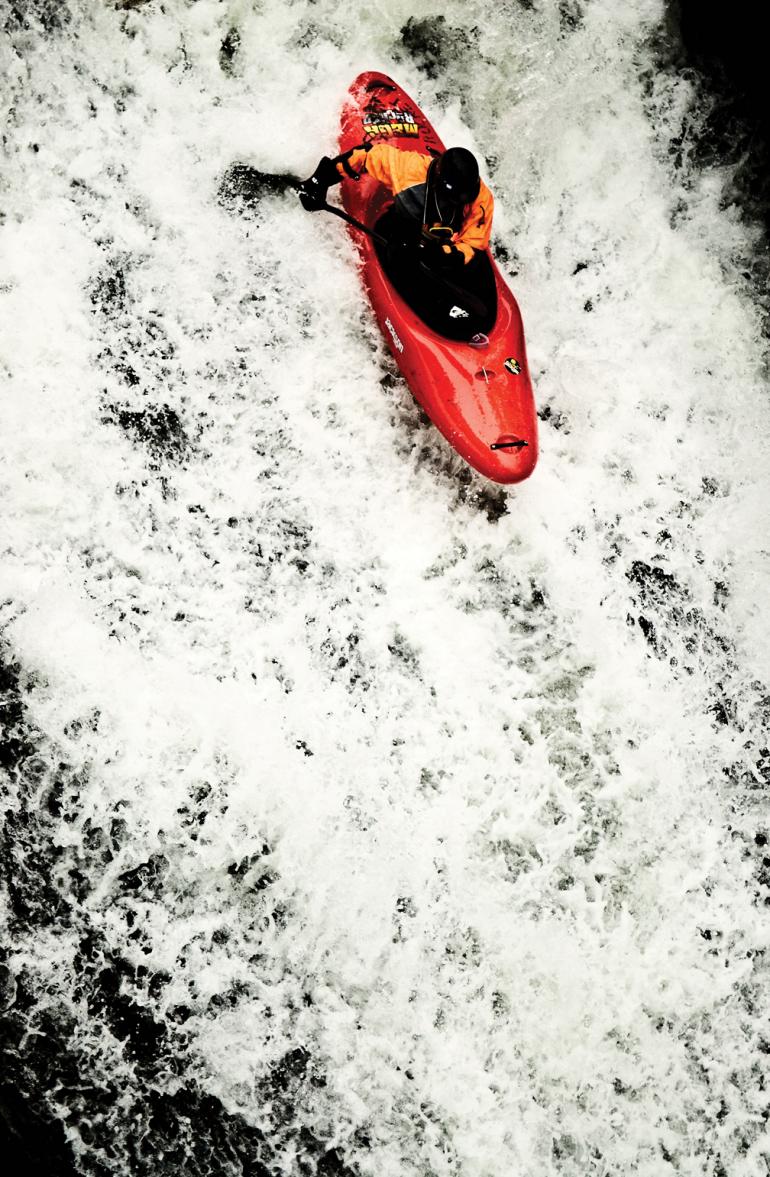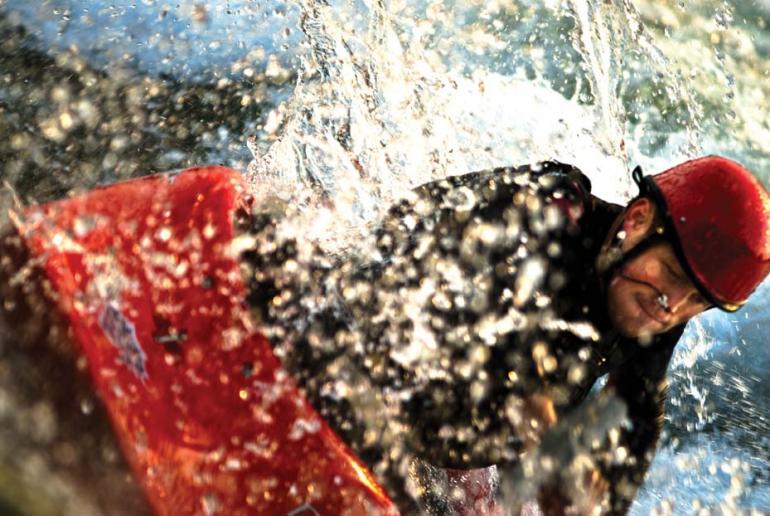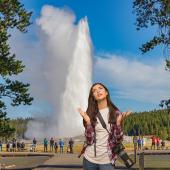High-Energy Photography
Whitewater kayaking has long been one of my favorite subjects to photograph. The high energy, emotion, and adventure elements of the sport inspire my photography and continually bring me back time and time again. The sport gives the photographer an amazing amount of creative freedom; however, there are a few things that I have found that help enhance the image.
First, switch the camera meter to spot mode. This gives the photographer full control of the contrasting shadows and highlights in the image, thus allowing the white foaming water to be white—not 18% gray as the camera sees it.
Consider your lens choice carefully. I often find myself shooting kayaking with a longer lens (200mm and up). A longer lens provides access to the fear, focus, and power usually only experienced by the kayakers themselves. It can get the photographer close when the river itself or the surrounding terrain won’t allow it. This is not to say that there is no room or circumstance for a wide-angle lens, as it should always be part of a photographer’s arsenal. The remaining creative controls, such as shutter speed, aperture, and specialty lens, are at the artistic disposal of the photographer.
Think ahead about the location, as well as the amount of time and energy it takes to get there. Luckily, due to the evolution of playboating and manmade waves, one has several options to choose from. The first option is to strap yourself and your costly camera equipment into a kayak and head down river with a few buddies. This obviously requires more than just photographic skill and could quickly turn into a long, wet, and expensive outing. The second (drier) option requires miles of bushwhacking and scouting for what may only amount to a few seconds behind the camera. This option, although rewarding, requires a fair amount of time, energy, and dedication to the craft. The final option rests in the convenience of manmade or standing waves—the whitewater photographer’s version of car camping. These waves provide a never-ending supply of subjects, along with the predictability of movement. This is a great place to try new techniques and to get creative. Another bonus to manmade waves is their proximity to the road, thus hauling any kind of equipment is no longer an issue.
As an experienced photographer or a beginner, the joy of whitewater photography is the fluidity of creativity, adventure, and energy captured by the perfect shot. Just as the long dark nights of winter slowly give way to the sun and warmth of spring, you can add swollen rivers to the list of things to get excited about. Whether you find yourself miles away from the car or right next to it, utilize these tips but don't be afraid to let your vision guide you.












